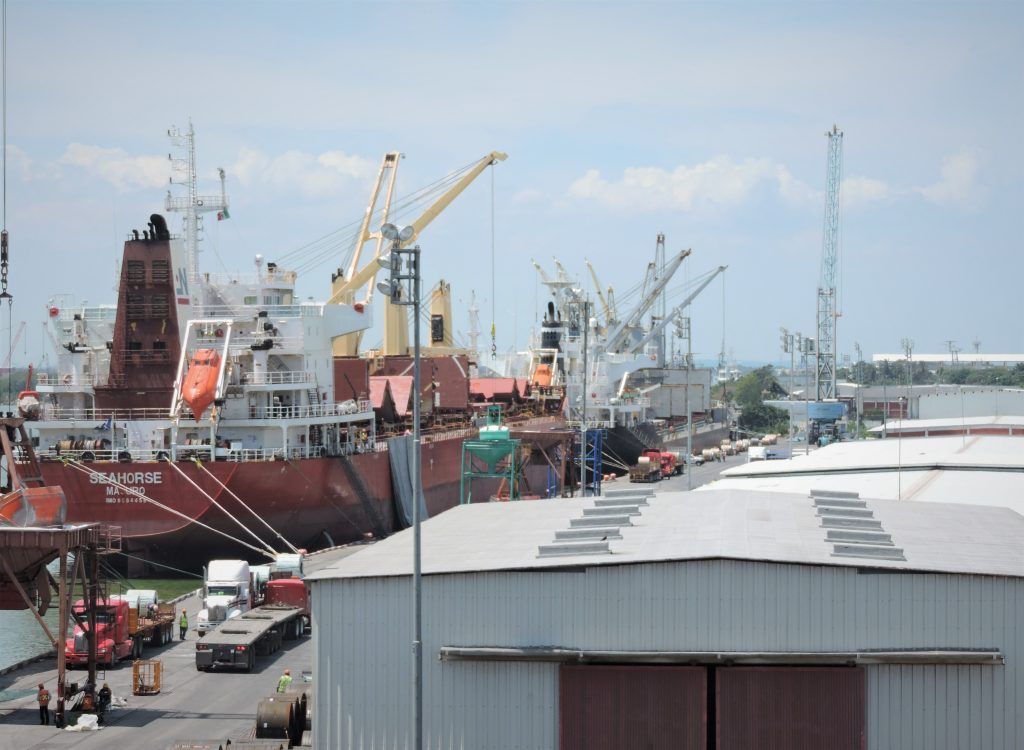The Ministry of Communications and Transportation (SCT) established four actions to increase the movement of cargo in the Port of Tampico, Tamaulipas, in Mexico.
Briefly, the port of Tampico has a variable official draft from 9.75 to 6.75 meters, having a total of 220 hectares of infrastructure for the navigation of boats, with a total length of navigation channel of 22 km, as well as an anchorage of 17.24 hectares.
The four actions of the SCT are:
- Build the Tampico customs building in order to provide quality service to users in secure facilities.
- Reconstruct the railroad tracks in the port area of Tampico, to improve connectivity within the Port.
- Build and extend the breakwaters and the marginal protection of the port of Tampico, to maintain the operation of the Port.
- Build warehouses 16 and 17 in the port to have safe spaces for cargo handling.
Port of Tampico
The port operates six different lines of business, and each of them presents different circumstances, thus projecting different scenarios in the demand for each of these.
Some, such as containerized cargo, have been worked only in public terminals, others, such as Oil and its derivatives, have only been mobilized through the Pemex terminal, while the rest have been registered in both public and private terminals, being the common denominator for them that, through the passage of time, all have meant economic growth and development in their regions of origin and in those of destination.
In the case of national destinations, Tamaulipas, Nuevo León, Coahuila, San Luis Potosí, Veracruz, Tabasco, Campeche, Yucatán and Quintana Roo are what represent 98% of the market of the port of Tampico, while in international destinations and origins United States has a participation of 90.3 and 66% respectively.
Given the current circumstances, calculating indicators to have a projection is complex in any sector that you want to analyze, therefore, it is essential to carry out constant monitoring and analysis, taking different time windows, based on the circumstances that favor each of these lapses.
In general, according to the SCT, international trade relations are expected to continue stable, since there is a mutual and historical dependence that proposes it.
![]()

